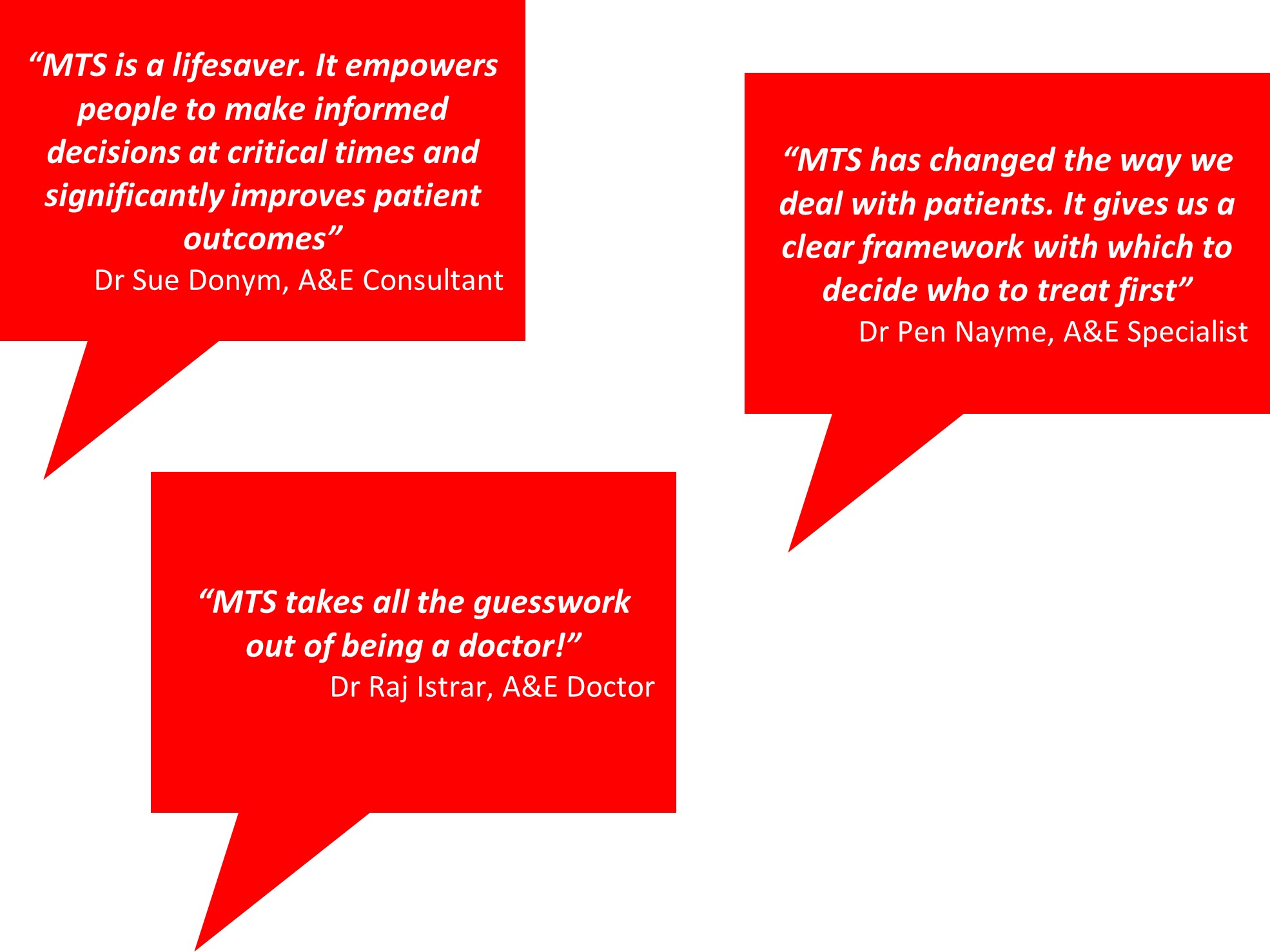
Emergency
Triage
The Manchester Triage System is a clinical risk management tool used by clinicians worldwide to enable them to safely manage patient flow when clinical need far exceeds capacity. It is a professional, expert system and the most, rather than the least experienced personnel in the department should be using it.
What is
Emergency Triage?
|

